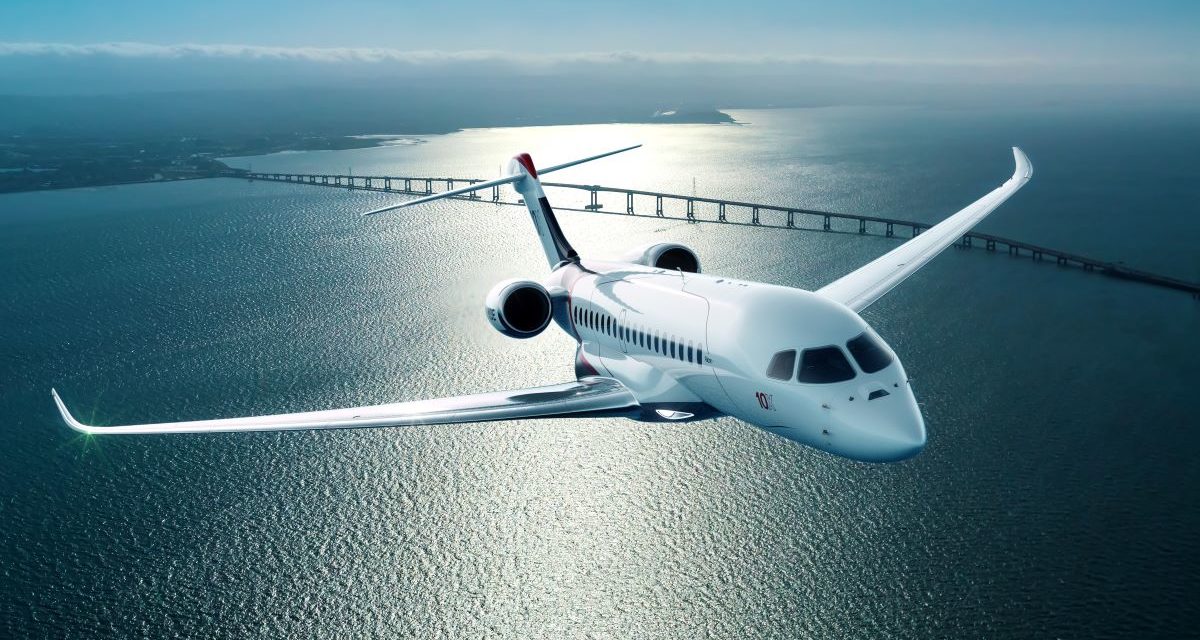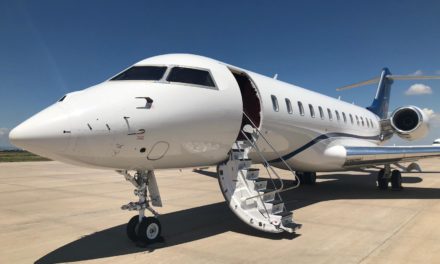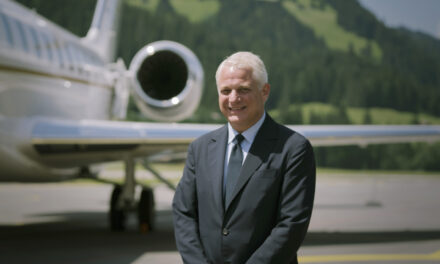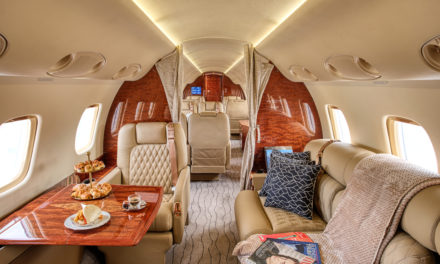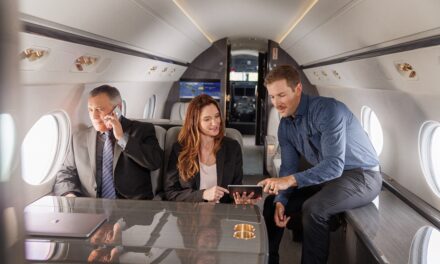By Fred Vergneres
Without a doubt, 2021 will be a milestone year for the cloverleafbrand. After the inaugural flight of its long-awaited Falcon 6X, Dassault Aviation unveiled its future flagship, the Falcon 10X, on Thursday, May 6, 2021. With this very high-end jet, Dassault intends to conquer new market shares from its two main competitors, Bombardier and Gulfstream.
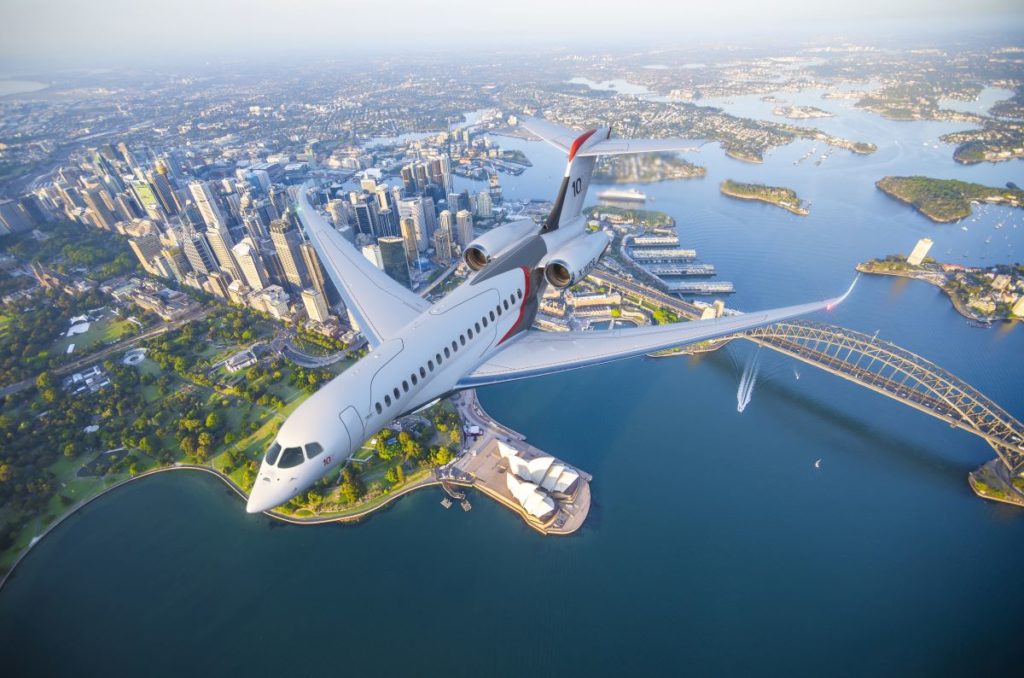
Dassault Aviation has put an end to several years of expectations and speculation by unveiling its new flagship Falcon 10X. The new aircraft is a reflection of the Saint Cloud-based manufacturer’s ambitions and, in addition to being the largest Falcon ever produced by the company, it will undoubtedly reshuffle the deck in the long-range, high-end aircraft sector. Despite the release of the Falcon 8X in May 2014 as a response to the release of the Gulfstream G650, Dassault has never been able to truly compete with the Savannah-based aircraft manufacturer’s flagship nor Bombardier’s Global 7500, also unveiled in 2014. With this new jet, as well as with the Falcon 6X, which is expected to enter service in 2022, Dassault is beginning its transformation and undoubtedly a recapture of the market long held by North American manufacturers.
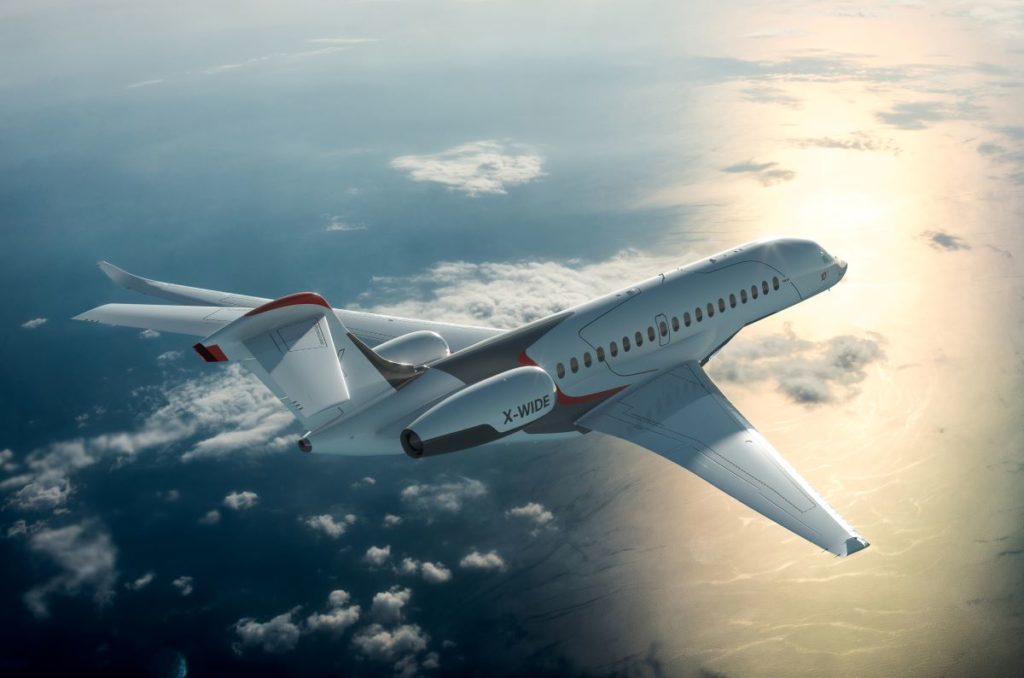
The world within reach
The Falcon 10X is the result of a long study that, according to Carlos Brana, Executive Vice President of Civil Aircraft for Dassault Aviation, “should give Dassault the ability to enter the high-speed, very long-range aircraft market segment and, beyond that, to respond significantly to the many requests from our customers for such an aircraft to enter the Falcon range. “In fact, the 10X is the Falcon of all superlatives. For proof, we need only look at its performance. With 12 people on board, the twin-engine jet will be able to fly a distance of 7,500 nm (12,000 km) at a maximum cruising speed of Mach 0.925. This will allow it to serve most of the world from Paris, Hong Kong, Los Angeles and even London City, as the aircraft manufacturer has already planned to operate to and from this specific airport. The design office has obviously ensured that the Falcon range will remain flexible enough to operate on a vast majority of terrain that is sometimes inaccessible to its main competitors. And despite it’s imposing size, the Falcon 10X will be able to take off from runways below 6,000 ft (1,828 m) and land in less than 2,500 ft (762 m).
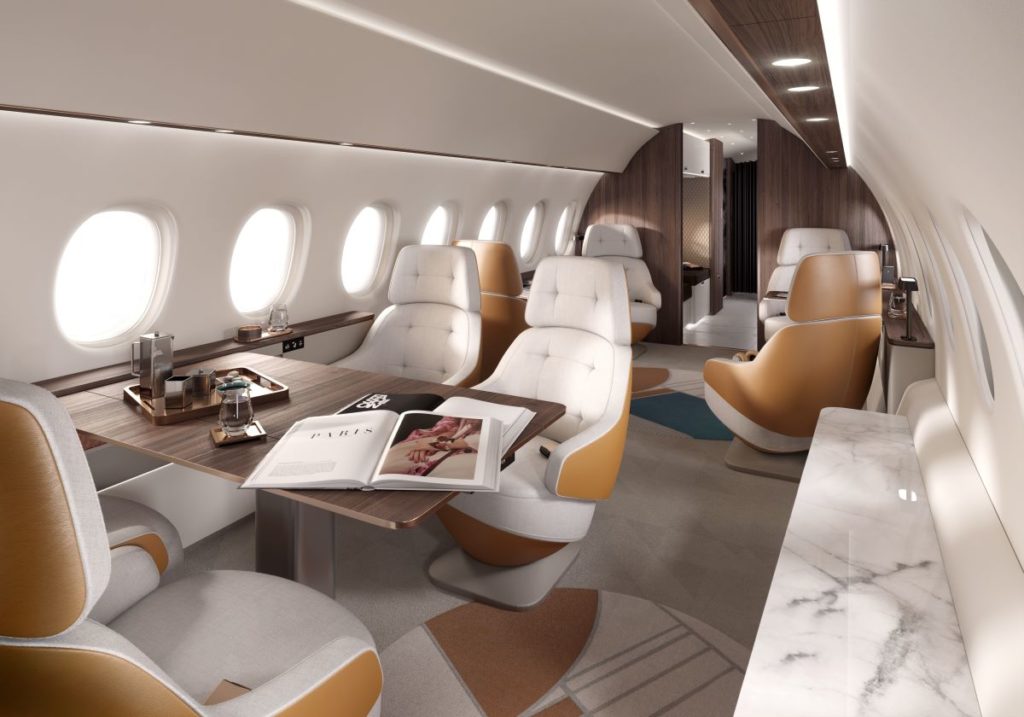
Huge cabin space of 2,637 ft3
For this Falcon 10X, the engineers started from scratch. The new flagship is entirely new, even if it’s style does not hide an affiliation with it’s predecessors. Despite it’s DNA, engineers have pushed ahead with the development of a latest generation wing made entirely of composite. This, in addition to performance, must bring more resistance and more flexibility during all phases of flights. Beyond that, the aircraft’s new profile shows a new design of the nose, which, not without style, gives it a look reminiscing that of Concorde. This minor external evolution essentially marks an internal revolution since this new jet was especially conceived around a true living space. Even before being the largest Falcon ever produced, the Falcon 10X will be the business jet with the largest cabin volume in service. The manufacturer has announced a cabin space of 2,780 ft3 (78.72 m3), well above it’s main competitors, the Bombardier Global 7500 (2,637 ft3 – 74.67 m3) and the Gulfstream G700 (2,603 ft3 – 73.70 m3). Dassault has chosen to offer three different cabin configurations, each divided into six distinct spaces. These include a crew area, a club lounge, a dining area, a couch and an entertainment lounge, as well as a suite with ensuite bathroom with or without a shower depending on the chosen configuration. The interior design teams led by Agnes Gervais, Industrial manager, new program and innovation, have taken into account the flight time, which can last up to 15 hours. Furthermore, the cabin experience offered by Dassault is the result of numerous analyses carried out with a large panel of selected customers and their feedback as regular business aviation passengers. In fact, in this cabin with its particularly generous dimensions of 53ft 10 / 16.40m – and a width of 9ft1 / 2.77m, nothing has been left to chance. Before designing the interior, various elements were taken into account such as the pressurization of the aircraft, the noise level, the humidity level but also the freedom of movement between each piece of furniture.
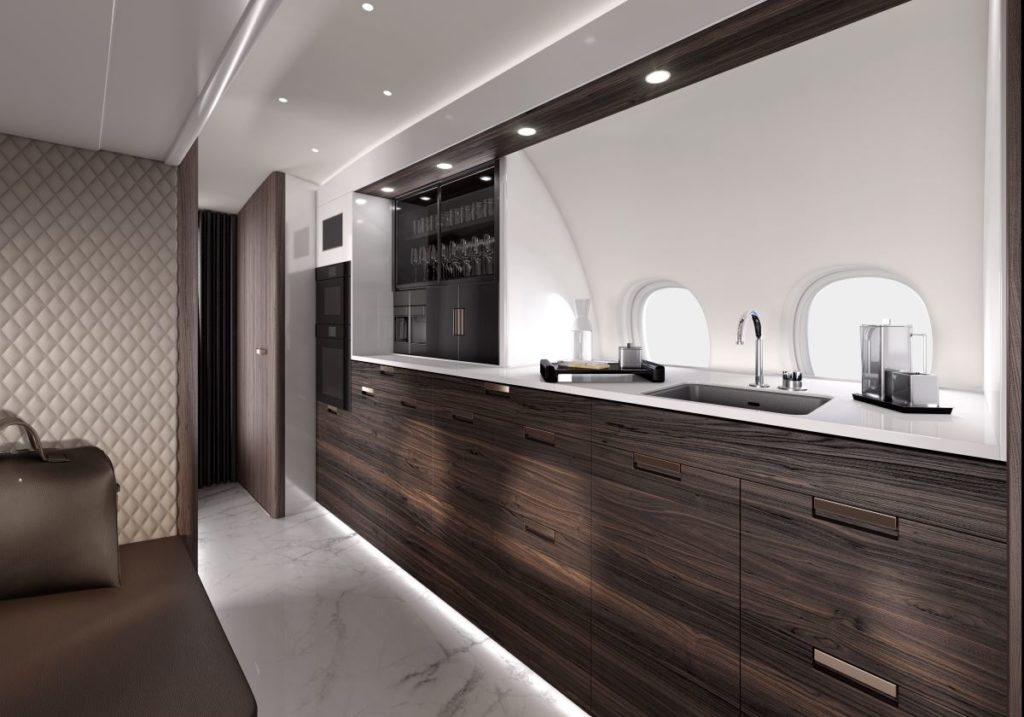
Home sweet home
The cabin designers of the brand with the cloverleaf have focused on the interior finish in the image of fashion, mixing current and future trends, paying particular attention to details. It is therefore a cabin with pure inspirations that is offered to us and Dassault has capitalized on a real vintage touch that we find especially in the design of the club seats. The latter, with their all-encompassing design, a sort of nod to the egg chair by Danish designer Arne Jacobsen, an icon of the 1970s, imposes a hushed and reassuring atmosphere. The natural materials have been particularly emphasized from the rest crew to the bathroom located at the back of the unit. We find wood, leather and stone on the different elements composing the cabin. And the latter are particularly highlighted by the exceptional brightness of the cabin, which has no less than 19 windows on each side. Thus, the manufacturer did not consider it essential to integrate the « skyview » concept over the cabin entrance, as it did previously on its Falcon 6X. Thanks to this natural light, the Agnès Gervais teams have played on simplicity without sacrificing comfort and practicality. The main galley is fully equipped with an imposing work surface, and has been designed for the comfort of both the passenger and the crew, who can easily live independently of the passengers. In this respect, Dassault has unveiled a concept based on the individual cabins equipped with a convertible seat proposed as a first in commercial aviation and which can be integrated into both the passenger and crew cabin. Each area has been given a special treatment, highlighting the optimization of space by the design teams to find an interior identical to that of a beautiful apartment. The modular dining room area allows guests to have enough space to move around without disturbing their neighbors. This feeling of space is well perceived in the “Master Suite” which offers the possibility of having a Queen Size bed. Of course, despite the apparent technological simplicity, the cabin design incorporates the latest in terms of external and internal connectivity, with the Ka Band Wi-Fi network and the control of the various elements via a dedicated application. The latter allows you to adjust the light, sound and air conditioning. To take full advantage of the interior, Dassault has focused on soundproofing, just like the Falcon 8X, which remains one of the quietest aircraft in the segment, as well as on one of the lowest cabin pressures on the market, equivalent to 3,000ft (914m) at FL410. In addition to the cabin space, there is also a large luggage compartment. The latter, accessible in flight, has a volume of 200ft3 / 5.6 m3 and a door that opens and closes electrically. In addition, Dassault has provided an additional cargo area of 8.1 ft3 / 0.23 m3 located below the baggage compartment access hatch.
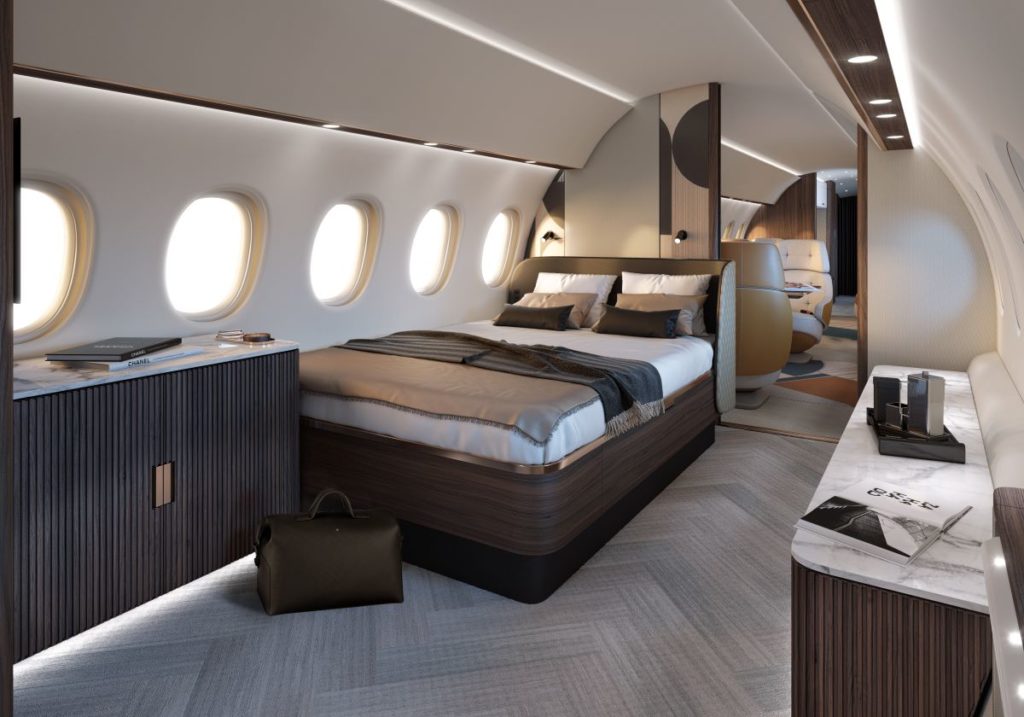
Streamlined avionics
The technological aspect being the DNA of the brand for several decades, the engineers at Dassault have obviously developed a new approach to avionics. The cockpit has been developed taking into account the integration of future new air traffic control standards and if it should allow to improve the man-machine interface, the teams of engineers and pilots of Dassault have focused on reducing the workload of pilots, especially in the context of flights of more than 15 hours. In fact, this “EASy IV”, which does not yet have a name, is not only simple to use, but above all even more intuitive than the previous EASy generations. We thus discover a particularly uncluttered cockpit, and without doubt rather destabilizing at first sight. The dashboard is composed of four large main screens, two Electronic Flight Bag – EFB – Falcon Sphere II, as well as two Touch Pad located on the side dashboard. All the screens on this new suite are fully touch-sensitive. The ceiling light has been reduced to its simplest form, as has the side panel, which consists of a single throttle lever in addition to the Touch Pad. Dassault has pushed innovation to the limits by adopting a single lever to control both engines. This smart throttle, equipped with several push-buttons for energy management as the air brake, auto throttle, take-off/go around. Reverse thrust integrated to this surprising single lever. This is a small revolution and evolution of the onboard automation system, to which has been added, in addition to the sidesticks which appeared for the first time on the Falcon 7X, the FalconEye HUD vision system combining a synthetic and improved vision – SVS/EVS – on the head-up display. As an additional safety feature, the Falcon 10X will also be equipped with the DFCS system, which automatically resumes the aircraft’s safe attitude and altitude at the touch of a button on the control column in the event of the pilot’s spatial disorientation. The improvement of the interface, which should reduce the workload of the crew and therefore the safety of the flights, is also reinforced by the consideration of a real space within the cockpit. The engineers have also given the crew the possibility of having seats that can be converted into beds in order to reduce crew fatigue in turn. In fact, the new jet is already designed to be operated by a single crew member, especially during cruise flight.
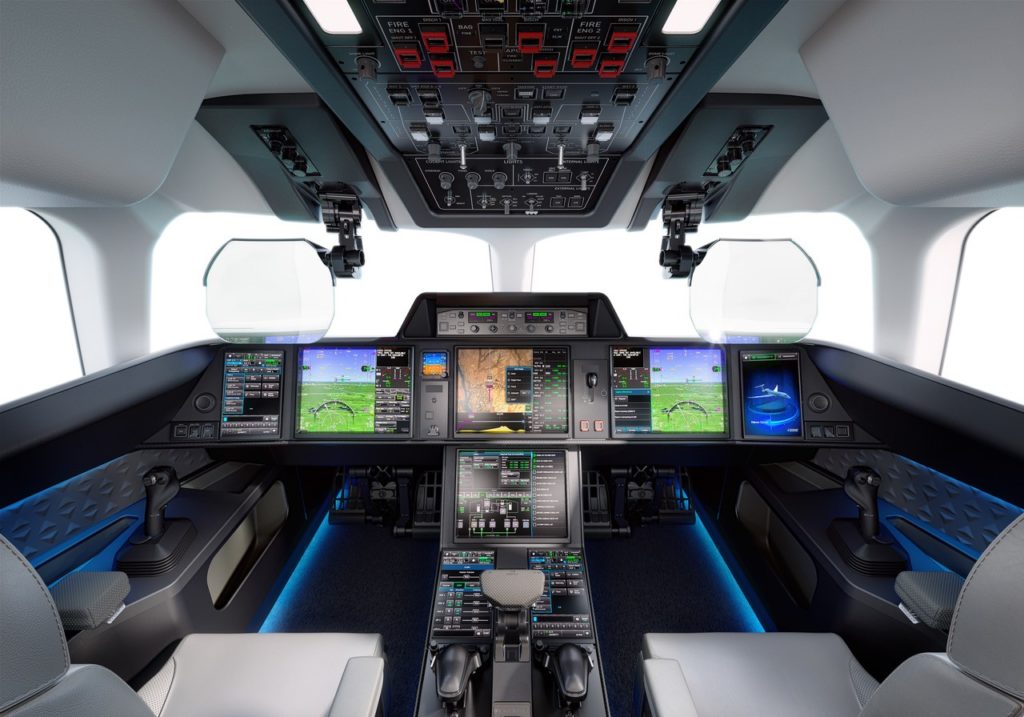
A pearl of an engine
With the development of this innovative avionics suite, Dassault Aviation aims, in addition to increased flight safety, to optimize trajectories in order to fly higher, faster and farther while reducing CO2 emissions and thus the carbon footprint that is currently being debated in the aviation world. With this in mind, and to meet the challenge of developing an ultra long-range aircraft, the French manufacturer has logically turned to Rolls-Royce and a derivative of its BR700. Dassault joins it’s main competitors Bombardier and Gulftream who have already selected this engine for the Global 5500/6500 range with the Pearl 15 version and the G700 with the Pearl 700 respectively. A proven engine and a brand new version specially developed for the new French flagship, the Pearl 10X. This new iteration develops 18,000 lbs and offers 5% more power than previous generations. In addition, its emissions are reduced by 5% and this new engine is especially 100% compatible with Sustainable aviation fuel -SAF. With this engine, Rolls-Royce is helping the airline industry make a genuine ecological transition. The Falcon 10X is one of the world’s most environmentally friendly business jets. In addition to the technical aspects of the new aircraft, which will provide greater power and fuel efficiency, the engine manufacturer has also focused on reducing the impact of engine nacelle drag. The Pearl 10X will be equipped with a particularly thin nacelle and optimized to reduce the noise impact. Rolls-Royce has already begun testing the new version of the BR700, with 1,000 cycle tests and more than 500 hours of flight testing on the new Boeing 747-400, which is now in operation as a flying testbed.
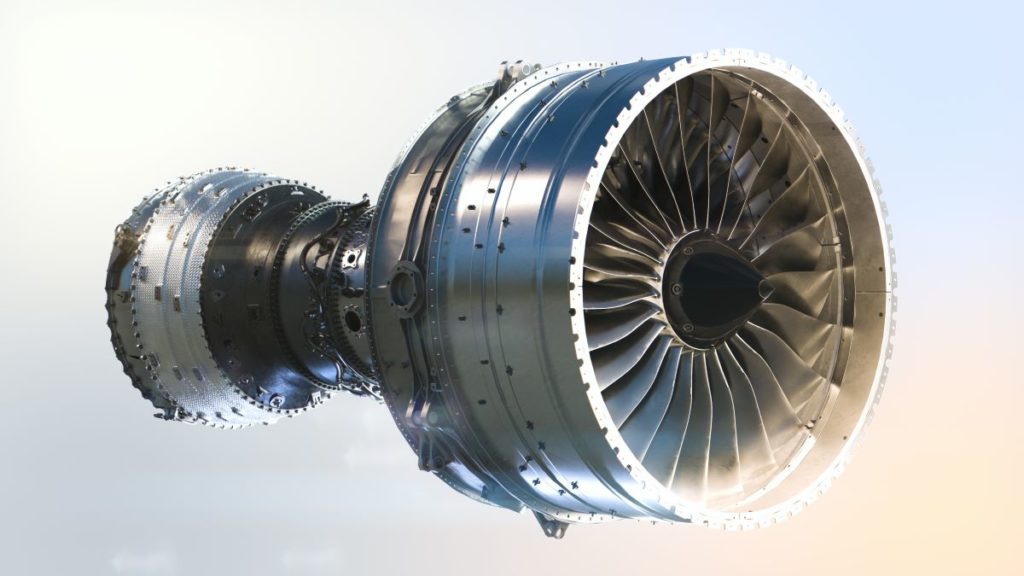
This brand-new Falcon is the forerunner of tomorrow’s business jets. Along with the Falcon 6X, the 10X will ensure that Dassault regains leadership in market segments it lost to North American manufacturers within five years. While the Falcon 6X is in it’s own class, the Falcon 10X is already laying the groundwork for a new type of segment, not only because of the size of the cabin, which makes it the largest business jet ever produced, but also because it is one of the most technologically advanced aircraft ever built, while taking into account the major ecological challenges. This tour de force is announced at a price of $75 million in 2021 economic conditions, which positions the aircraft in the same price range as some of it’s competitors. Dassault announces an entry into service of its flagship in 2025. This would seem to be an ideal time for a recovery in the business aviation market, especially in the high-end segment, according to the latest analysis by the equipment manufacturer Honeywell.

